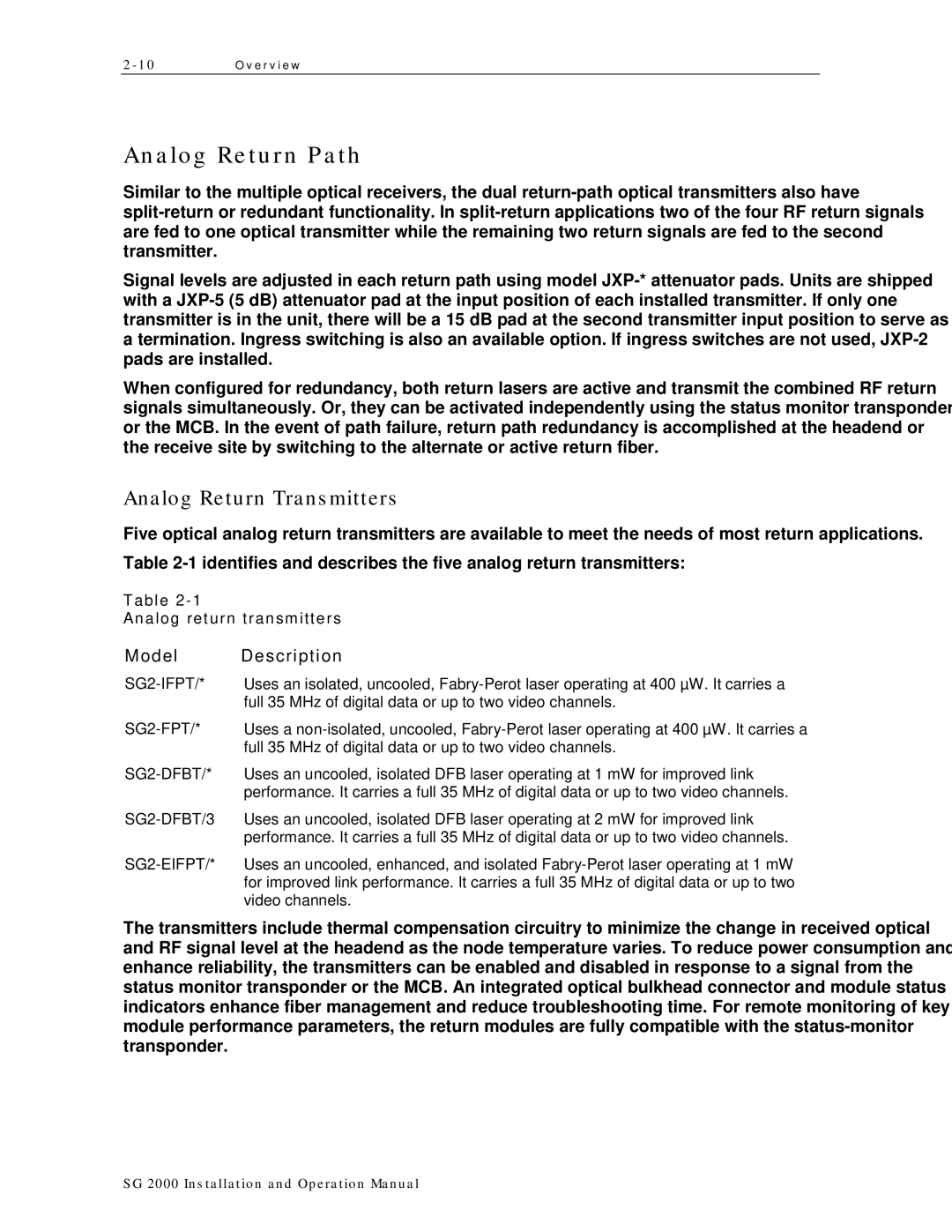Analog Return Path
Similar to the multiple optical receivers, the dual return-path optical transmitters also have split-return or redundant functionality. In split-return applications two of the four RF return signals are fed to one optical transmitter while the remaining two return signals are fed to the second transmitter.
Signal levels are adjusted in each return path using model JXP-* attenuator pads. Units are shipped with a JXP-5 (5 dB) attenuator pad at the input position of each installed transmitter. If only one transmitter is in the unit, there will be a 15 dB pad at the second transmitter input position to serve as a termination. Ingress switching is also an available option. If ingress switches are not used, JXP-2 pads are installed.
When configured for redundancy, both return lasers are active and transmit the combined RF return signals simultaneously. Or, they can be activated independently using the status monitor transponder or the MCB. In the event of path failure, return path redundancy is accomplished at the headend or the receive site by switching to the alternate or active return fiber.
Analog Return Transmitters
Five optical analog return transmitters are available to meet the needs of most return applications. Table 2-1 identifies and describes the five analog return transmitters:
Table 2-1
Analog return transmitters
Model Description
SG2-IFPT/*Uses an isolated, uncooled, Fabry-Perot laser operating at 400 µW. It carries a full 35 MHz of digital data or up to two video channels.
SG2-FPT/*Uses a non-isolated, uncooled, Fabry-Perot laser operating at 400 µW. It carries a full 35 MHz of digital data or up to two video channels.
SG2-DFBT/*Uses an uncooled, isolated DFB laser operating at 1 mW for improved link performance. It carries a full 35 MHz of digital data or up to two video channels.
SG2-DFBT/3Uses an uncooled, isolated DFB laser operating at 2 mW for improved link performance. It carries a full 35 MHz of digital data or up to two video channels.
SG2-EIFPT/*Uses an uncooled, enhanced, and isolated Fabry-Perot laser operating at 1 mW for improved link performance. It carries a full 35 MHz of digital data or up to two video channels.
The transmitters include thermal compensation circuitry to minimize the change in received optical and RF signal level at the headend as the node temperature varies. To reduce power consumption and enhance reliability, the transmitters can be enabled and disabled in response to a signal from the status monitor transponder or the MCB. An integrated optical bulkhead connector and module status indicators enhance fiber management and reduce troubleshooting time. For remote monitoring of key module performance parameters, the return modules are fully compatible with the status-monitor transponder.
